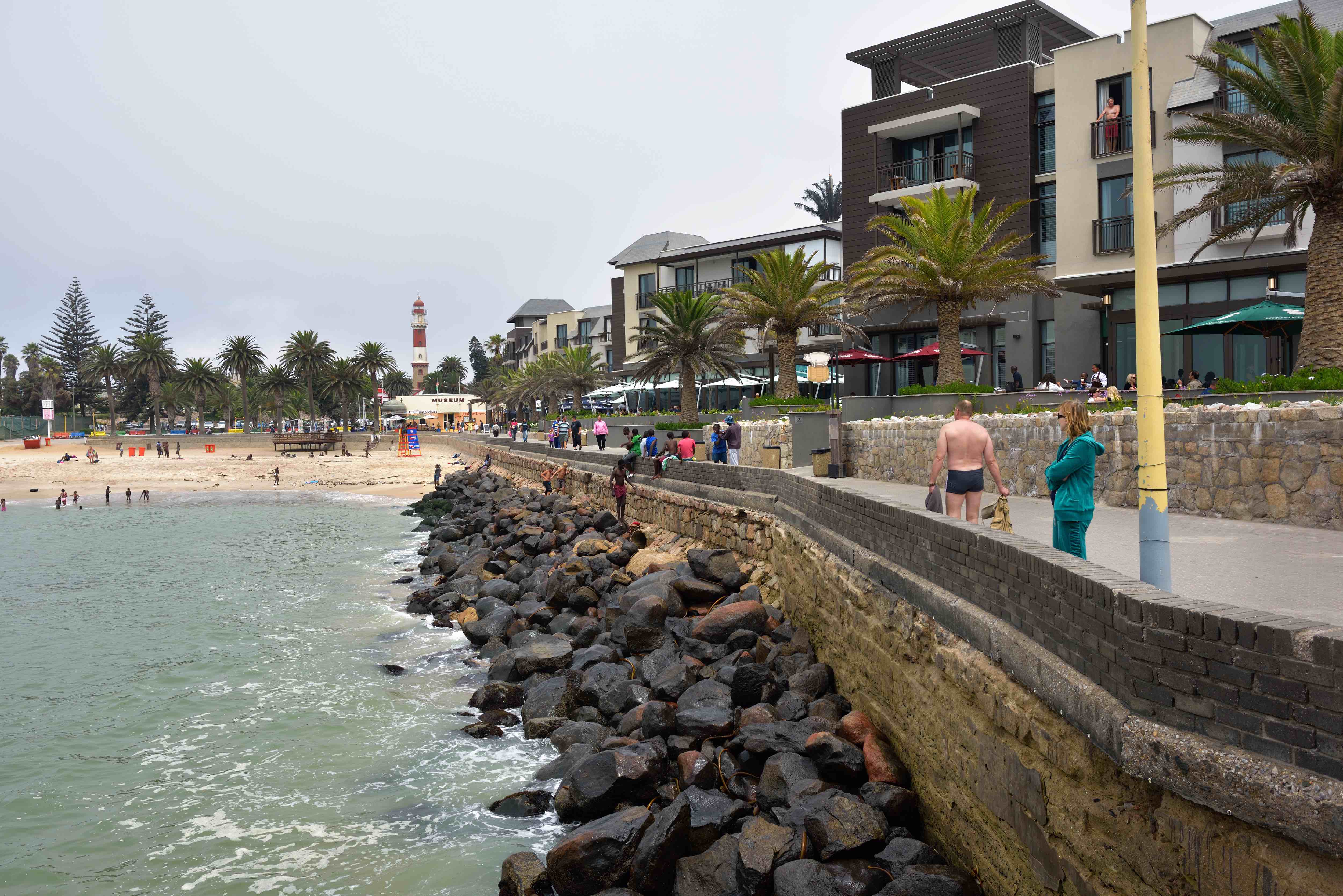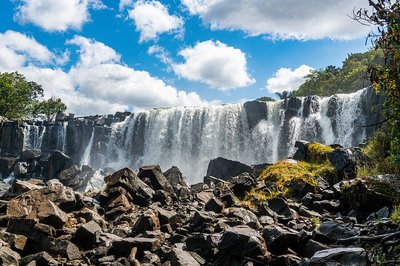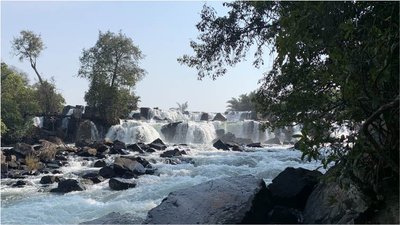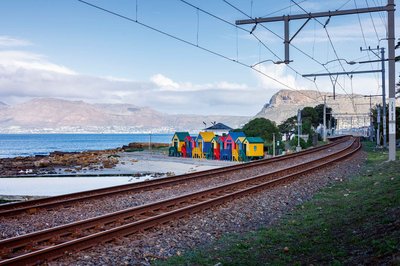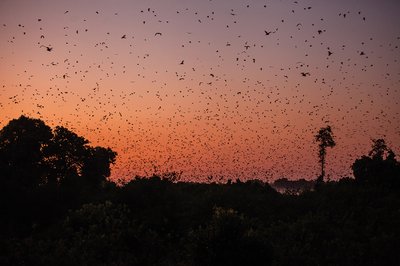With inviting beaches and misty mornings that present a welcome escape from the sweltering heat inland, Namibia’s coast is understandably one of its most loved breakaway spots. A spellbinding environment, it is characterised by the sight of an ancient sand sea that majestically towers above and gradually fades out into the treacherous waters of the Atlantic below.
Famed for its captivating character and mysterious appeal, the Namib Desert in all its primordial glory represents a vast spread of imposing sandy outcrops sheltering the entire length of the county’s 1 570 km coastline and beyond, as it spills over into Angola and South Africa. But the dune belt that flanks the ocean represents by no means the full extent of this majestic desert. Along with intriguing geological formations, sensitive gravel plains and scattered mountain ranges, it plays host to a diversity of fascinating desert-adapted animals, plants and organisms that’s been attracting adventurers for centuries.
Along the ocean, forces of nature have shaped inlets and beaches into the infinite panorama, providing sheltered spaces for settlers to claim and set up community. Since the very beginning, coastal settlements have provided safe sanctuary from the hospitable environment that surrounds it, calling to explorers and colonisers to lay the foundations for a history of discovery.
At the heart of it all sits Swakopmund, the ideal starting point from where to explore the enclosing habitat in all its splendour. Centred around a harbour that dates back to 1892, the town is famed for its alluring old-world charm. Landmark buildings such as the Kaiserliches Bezirksgericht, Altes Amptsgericht, Evangelical Lutheran Church and Woermann Haus (which affords endless vistas of the surrounds from its top floor), make for a picturesque historical overview that speak of times when the German Emperor still called the shots.
Today, history is paired with modern amenities, activities and accommodation as Swakopmund continues to lure locals and tourists alike. There’s much to see and even more to do – a walk through the inner city will allow the chance to get acquainted with history, and a trip to the township will bring you closer to culture. For the hungry, an assortment of eateries, cafés, coffee roasters and beer gardens cater to satisfy every taste, while local products, handmade crafts and curio shops see to the souvenir need. Using the town as a base, discover unique arid and marine ecosystems or visit neighbouring settlements such as Walvis Bay, Henties Bay or Cape Cross. And if all else fails, simply kick off your shoes and enjoy sea and sand with a cocktail in hand.
- NATIONAL MARINE AQUARIUM
Seeing as you’re spending time by the ocean, take some time to get acquainted with the creatures that inhabit its icy waters. The National Marine Aquarium is located at a prime position on the beach, at one end of the promenade leading from the Jetty. With seawater drawn from the old jetty and pumped through a filter system before ending up in the various tanks, it nurtures life from the cold Benguela Current in a natural setting. The main tank – with a capacity of 32 000 litres – boasts an underwater walkway for frightening close-ups of sharks, rays and other large fish species. Smaller tanks afford views of organisms such as mussels, molluscs, barnacles, anemones and starfish found along the beaches. Plan your visit around 3pm to experience the daily feeding frenzy of the manta rays, or come on a Tuesday, Saturday or Sunday to see how daring divers nourish the sharks by hand.
- THE JETTY
The Jetty is without a doubt the town’s most iconic attraction, with its original foundations dating back to the very beginning of German colonisation in the country. With the arrival of the Schutztruppe and proclamation of German South-West Africa, the source where the Swakop River enters the ocean was seen as the ideal basis to set up a harbour to offload imported goods and then transport it further inland. Firstly, it supplied a steady source of fresh water, and secondly, it served as a sheltered inlet from the turbulent waters that surround it.
Since its original construction the jetty had only been renovated three times; the most recent being after 1998 when it was deemed structurally unsafe. The subsequent closing down created such a stir amongst local inhabitants that it saw to the establishment of the ‘Save the Jetty Fund’ by a former mayor. This not only led to a revamped walkway and view point protruding into the ocean, but also to the construction of the renowned Jetty 1905 Restaurant and Oyster Bar. The restaurant, with its glass floor and unsurpassed views of the waters around it, takes eating seafood at the ocean to a completely different level. Definitely worth an oyster, or two!
- SAND AND SEA
Once you’ve seen it all – or a bout of idleness kicks in – fear not, because Swakopmund is also the perfect beach bum destination. The Mole houses the main swimming area, a protected inlet from the currents beyond, while Tiger Reef is another great choice as an authentic on-the-beach restaurant. Located at the mouth of the Swakop River, it is often affected by flooding, especially during spring tide, but don’t let that stop you from lounging back on a beach chair and digging toes into the sand. The nearby wetlands are rich in bird life and unusual plant species, which also makes for an interesting visit.
For a more in-depth experience of local fauna and flora, take a tour with one of the many operators focused on the ‘Living Desert’, or head to the dunes and enjoy an adrenaline kick with a unique desert activity like sand boarding. Other desert exploration options are offered on the back of a camel, quad or fatbike – take your pick!
- SWAKOPMUND MUSEUM
With such a colourful history, it comes as no surprise that a visit to the Museum at the Mole beachfront should be on any first-time visitor’s list. Housed in the Old Customs building it presents a great selection of artefacts and displays on botany, geology, archaeology, culture and history, ethnography, and mining. Themed rooms allow the possibility to study some of the Namib’s rare fauna in detail, including shyer species such as the golden dune mole and aardvark. One of the larger display rooms is dedicated to the ‘People of Namibia’, and as a country home to 13 different ethnic groups, it presents easy access to its ancient cultures and traditions. To round off the visit, don’t forget to have a look at the collection of German colonial relics, which serves as remnants and reminders of history. From the museum you can also book an informative tour to the Rössing mine – one of the largest open cast uranium mines in the world.
- A SENSE OF CULTURE
No visit to Swakopmund is complete without a stop in Mondesa or the Democratic Resettlement Community (or ‘DRC’ as it is locally known). A colourful taste of local culture, minus the colonial touch. Here visitors can expect to get up close and personal with residents such as traditional healer Wilma Garises. One of only a handful of healers in the area, she offers the very rare opportunity to hold the backside of an aardvark in the palm of your hands.
If that is not really your thing, sharpen your tongue with a Damara/Nama click test and pair it with a cold beer at a local shebeen. Or look forward to the traditional meal at the end of the trip, where you can dip handfuls of mahangu (pearl millet porridge) in chicken-infused gravy, bite into a spicy mopane worm and wash it all down with some Oshikundu (a fermented mix of water, sorghum and mahangu). There’s a selection of tour operators offering trips into the township and with most of them being inhabitants of the area themselves, it presents the perfect chance to get acquainted with the locals.
